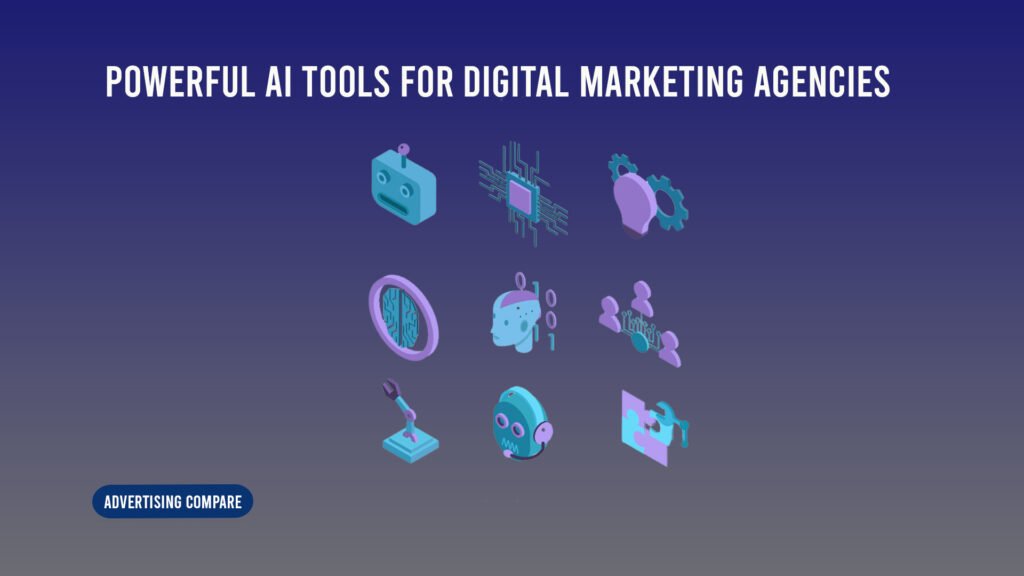Over the majority, 80% of marketers globally currently incorporate artificial intelligence (AI) in some capacity into their online marketing endeavors. Indeed, the fourth industrial revolution is well underway, resulting in unprecedented human-machine interactions. Yes, there is a risk associated with the good. Not every technology that claims to have AI capabilities lives up to expectations. Without proper supervision, AI can do more harm than good.
However, when used properly, AI tools can boost productivity to previously unheard-of levels. Continue reading for eleven revolutionary AI technologies that your marketing agency needs right now, regardless of whether you have already started experimenting with AI or are just getting started.
The Value of Using AI Tools to Save Time in Marketing
Along with your current clientele, your marketing firm has recently added a number of new ones. Before the reality of the new business sets in, everyone is ecstatic. Your staff is overworked from attempting to complete so many accounts with high-quality work on short notice.
As your crew works through the night in a desperate attempt to catch up, stress levels climb. However, there are still projects that slip through the cracks, and clients become irate about missed deadlines or deteriorating quality. For a marketing agency, time is the most valuable asset. Your ability to accept new clients is based on your efficacy and efficiency. If you don’t adopt these tools, you run the danger of falling behind as marketing continues to shift toward AI-powered solutions.
In a short while, your rivals will be able to provide customers with speedier service at the same or cheaper cost. Accounts that contribute significantly to your revenue could disappear. Operations can be streamlined by incorporating artificial intelligence techniques. It might provide your staff with more time to concentrate on strategic and innovative tasks. AI saves money while enabling you to scale your efforts enormously. For example, deploying a chatbot is significantly less expensive than hiring a second customer support representative.
Things to Consider While Selecting AI Marketing Tools
As with any developing technology (cryptocurrencies, for example), there are a good number of failures in the AI space. You don’t want to be the victim of a shoddy product particularly if you don’t know a lot about how artificial intelligence operates behind the scenes. It’s possible that errors in the tool won’t even be apparent to you until a client leaves.
The following critical elements should be taken into account when looking into AI products for your marketing agency:
-
Utilization Case
Different marketing agencies’ use of AI tools depends on different underlying technologies. Large language models, or LLMs, include some, and machine learning is used by others. Make sure the item you choose is capable of performing the tasks you need it to.
-
Usability
The field of artificial intelligence is intricate, including computer science, arithmetic, and programming. However, daily use of technologies intended for business applications shouldn’t be difficult. Look for an AI marketing solution that integrates easily with your tech stack and has user-friendly interfaces. Even the less tech-savvy team members ought to be able to take advantage of its potential.
-
Cost
Any new technology must, of course, work within your financial limits. After all, you are a business owner. A lot of AI products use a token-based pricing structure. Additionally, there are a few free AI marketing tools available that could be useful in the beginning. But sooner rather than later, as a marketing agency, you’ll probably need greater authority.
-
Precision
If an AI is trained on faulty data, then its results will also be faulty. Tools that have a track record of producing precise, high-quality outputs should be given priority. To find out, read reliable third-party reviews.
-
Combination
To what extent does the tool fit into your current workflows? Efficiency depends on smooth interoperability with the various programs your agency already utilizes. Look for AI firms that provide turnkey integration or that have easily linkable APIs.
-
Client Assistance
There are occasional glitches in even the best software. Excellent customer service makes all the difference when problems occur. Give AI tools priority when it comes to phone, email, and live chat assistance.
Extra points for having an active user community or extensive online knowledge base for advice and assistance. Pro tip: pretend to be a potential customer to test their service. Examine the speed and caliber of their reactions when they respond to you.
-
The ability to scale
Is the AI tool scalable to expand with your agency? When you outgrow a tool, it can be expensive and disruptive to change your process in the middle. Make sure the tool you choose has enough headroom to accommodate increases in the amount of data, tasks, and users.
-
Safety
Strong security is a must, especially when managing confidential customer information. Examine programs to ensure that they employ best practices such as data anonymization, access limits, and encryption. For instance, medical practitioners are prohibited from entering patient data into any AI tool due to potential HIPAA violations.
22 Powerful AI Tools For Digital Marketing Agencies
Here is the List of Top Powerful AI Tools For Digital Marketing Agencies in 2025 and 2026.
- ChatGPT
- Jasper AI
- TypeFrames
- Midjourney
- Grammarly
- Lexica Art
- Surfer SEO
- Concept AI
- Content at Scale
- Originality AI
- Writer
- Undetectable AI
- Fullstory
- Zapier
- Headlime
- Userbot AI
- Browse AI
- Alogolia
- PhotoRoom
- Respond.io
- Brand 24
- Power AI
- Lately AI
1. ChatGPT:
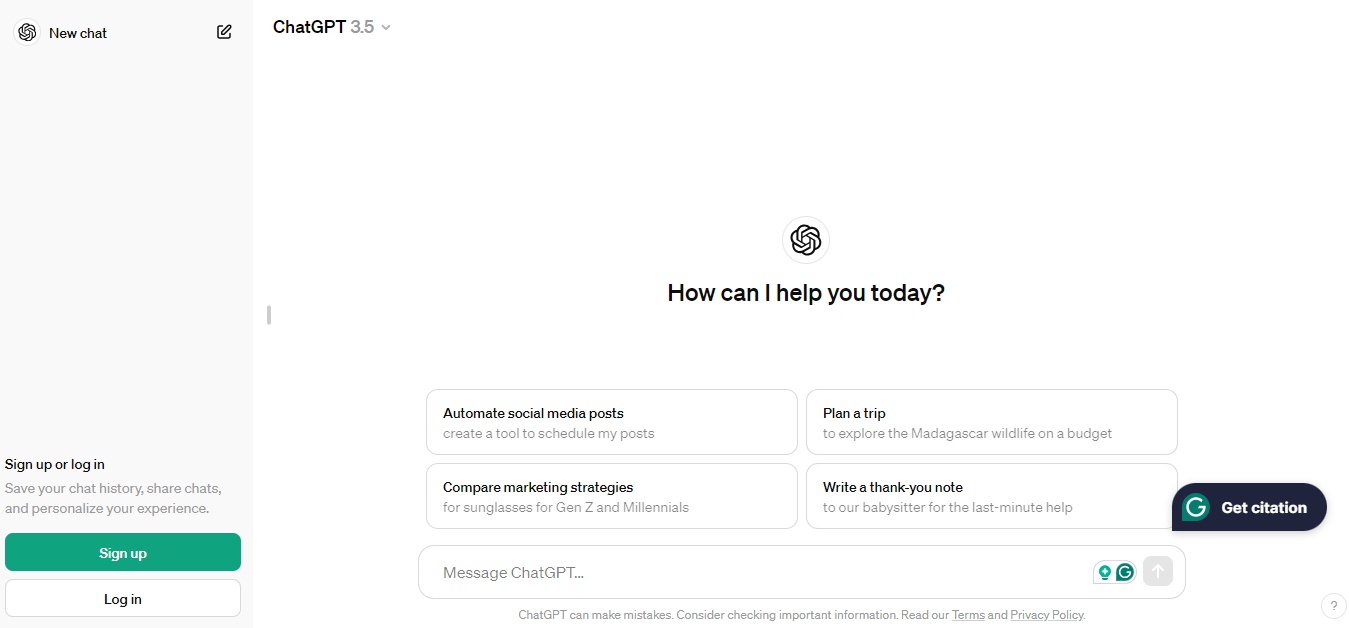 The AI writing craze has been driven by ChatGPT-3.5 and ChatGPT-4 which provide one of the easiest-to-use copywriting tools. The platform is a great way to make ideas and produce results. To save time when working on an email newsletter, social media campaign, or blog post, you can ask for lists, outlines, ideas, and a variety of other starting materials.
The AI writing craze has been driven by ChatGPT-3.5 and ChatGPT-4 which provide one of the easiest-to-use copywriting tools. The platform is a great way to make ideas and produce results. To save time when working on an email newsletter, social media campaign, or blog post, you can ask for lists, outlines, ideas, and a variety of other starting materials.
Although there are hazards associated with trusting its accuracy, some marketing organizations employ it for content generation. Moreover, the results frequently have an “AI-written” flavor. However, it’s a fantastic ally to jumpstart initiatives and support your marketing campaigns.
2. Jasper AI:
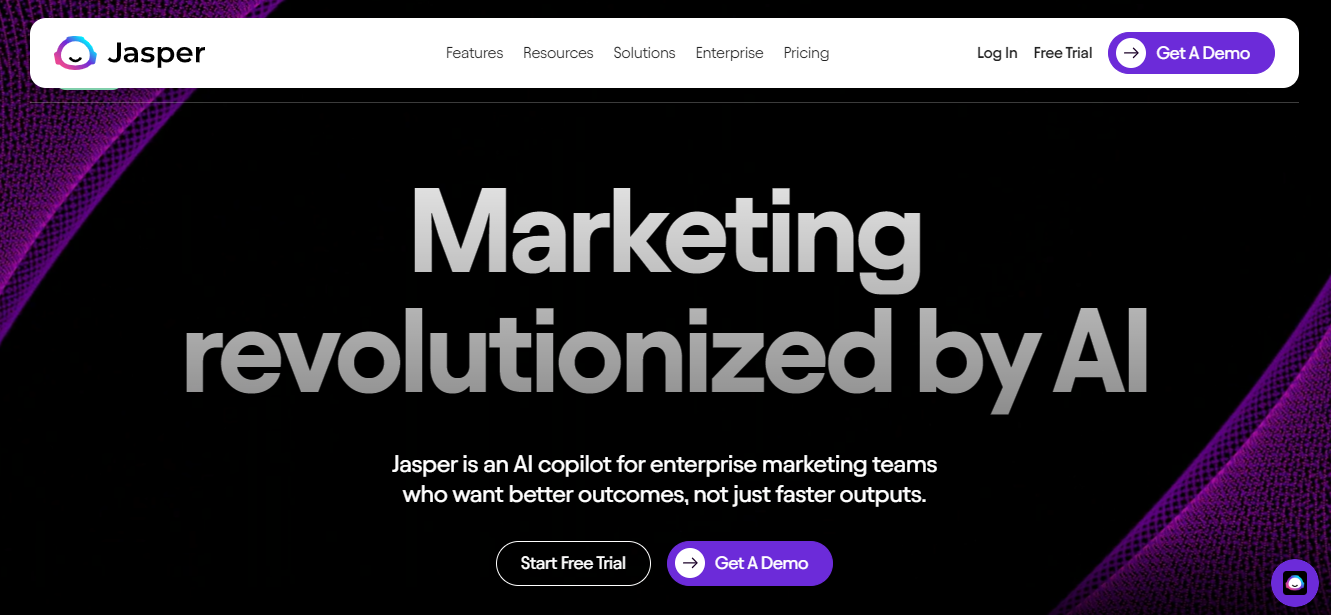 The makers of the most well-known AI-powered copywriting system, Jasper, quickly succumbed to their own fame.
The makers of the most well-known AI-powered copywriting system, Jasper, quickly succumbed to their own fame.
This human writer has to regrettably admit that Jasper is quite skilled at crafting text in a range of tones and styles on any topic you can throw at it. The people who made it say it has “read” 10% of the internet. How busy is Jasper? I asked Jasper, using a free trial, to write forty words about AI in business processes. With it came: Artificial intelligence the upcoming development in business automation. The efficiency of business processes has been greatly helped by AI. Artificial intelligence (AI) can be integrated into the business operations of an organization to increase efficiency, cut costs, and improve customer service for a particular strategic goal.
This is definitely a good start even if there is some repetition and a requirement for human help to understand the flow of the material. Probably better to consider Jasper’s natural language processing as a tool for creating drafts that human copywriters can then polish. Anything you need to be written, including blog posts, landing page copy, e-commerce product descriptions, and email marketing, Jasper can do.
Adopting it is cheap, the dashboard is user-friendly, and content creation will go faster. Though Jasper won’t turn you into the next Tolstoy, its 5,000+ 5-star product reviews will help you keep those important top SEO page rankings.
3. TypeFrames:
 Typeframes In a matter of minutes, this nifty AI program can produce films. With Typeframes, you may use the platform to promote a new product or generate excitement for an upcoming event. Typeframes home screen AI tools for marketing agencies. Source
Typeframes In a matter of minutes, this nifty AI program can produce films. With Typeframes, you may use the platform to promote a new product or generate excitement for an upcoming event. Typeframes home screen AI tools for marketing agencies. Source
Simply enter a few sentences, and the program will create a video on its own. Animations, pictures, music, and other effects are all addable. With a small fraction of the time and money you’ve previously invested, it’s a fantastic method to launch new concepts and campaigns. Typeframes are priced at $24 per month (on the annual plan).
4. Midjourney:
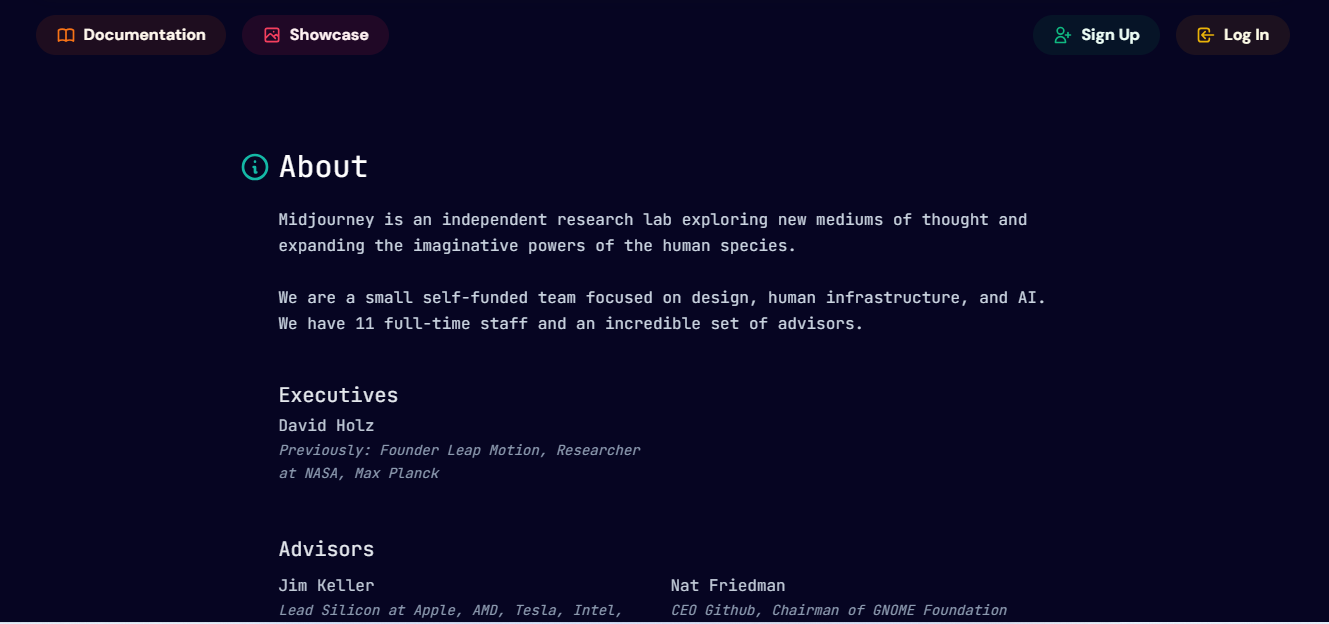 Midjourney home screen – AI tools for marketing agencies. Marketing companies may create magnificent, cinematic-style artwork that is detailed and visually arresting by using Midjourney. Any style image can be created in a matter of seconds. With a few suggestions, Midjourney can create realistic photos, paintings, or cartoon-style artwork that shows clients enjoying your client providing emotional advantages.
Midjourney home screen – AI tools for marketing agencies. Marketing companies may create magnificent, cinematic-style artwork that is detailed and visually arresting by using Midjourney. Any style image can be created in a matter of seconds. With a few suggestions, Midjourney can create realistic photos, paintings, or cartoon-style artwork that shows clients enjoying your client providing emotional advantages.
Midjourney can help your creative team get a jump start on a campaign or even assist save money on certain stock photo needs. Pricing: $8 a month (paid annually) is the starting price for the platform.
5. Grammarly:
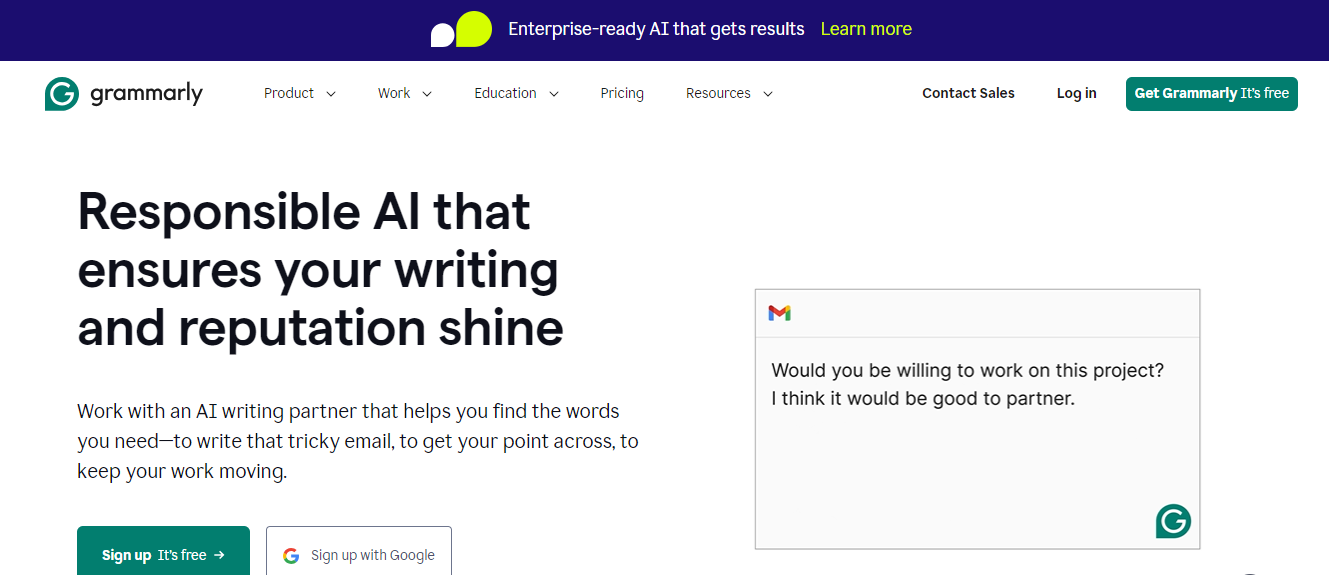 Grammarly is an editing application that helps you find and fix spelling and grammar mistakes. Additionally, its AI enhancements assist you in content creation. Grammarly’s home screen, an AI tool for marketing agencies. identify awkward phrasings and passive sentences, and use Grammarly. You can also use it to rephrase material to make it easier to read. Grammarly may now offer fresh ideas for authoring preexisting content or assist you in beginning a brand new piece of writing thanks to the integration of generative AI.
Grammarly is an editing application that helps you find and fix spelling and grammar mistakes. Additionally, its AI enhancements assist you in content creation. Grammarly’s home screen, an AI tool for marketing agencies. identify awkward phrasings and passive sentences, and use Grammarly. You can also use it to rephrase material to make it easier to read. Grammarly may now offer fresh ideas for authoring preexisting content or assist you in beginning a brand new piece of writing thanks to the integration of generative AI.
The platform is essential and will save you a ton of time—not to mention awkward situations like the time you misspelled “espresso” instead of “expresso.”Grammarly is available for free, while there are paid subscriptions as well.
6. Lexica Art:
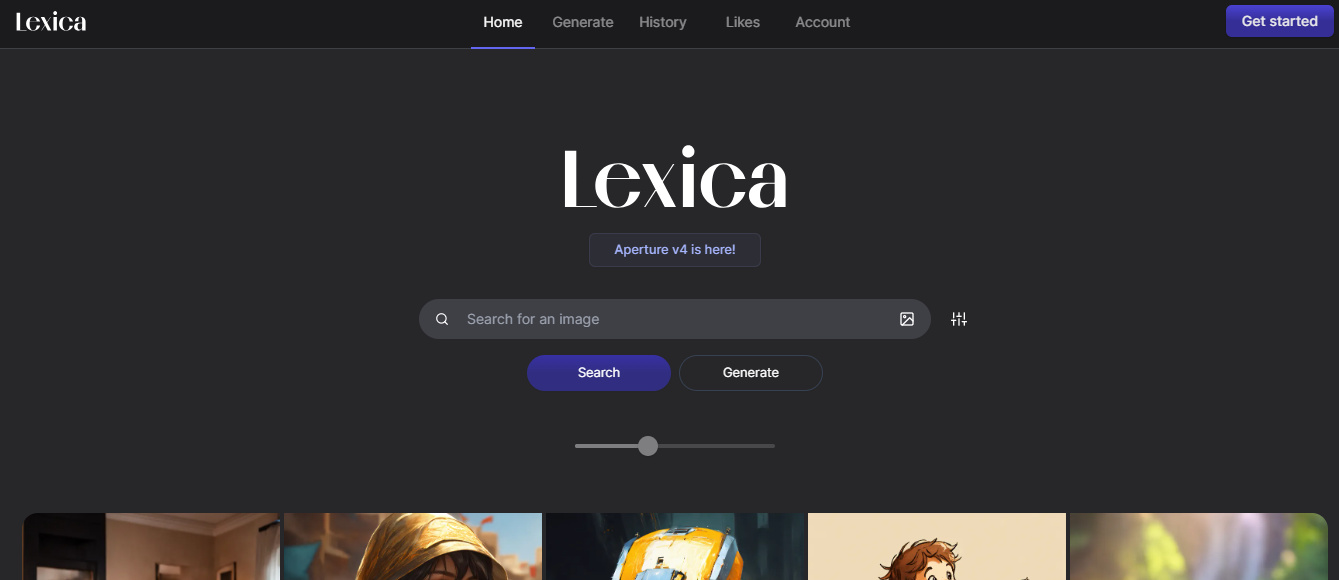 We think Lexica Art is one of the best AI image creators ever. It can create marketing material for almost anything and generates some of the most lifelike AI images. Using this technology driven by generative AI, I have personally produced blog thumbnail images for my SEO (search engine optimization) clients. Many prompts can be saved and used to make sure every image the program produces is “on brand” and follows your brand guidelines. Some companies use it even for their social media posts.
We think Lexica Art is one of the best AI image creators ever. It can create marketing material for almost anything and generates some of the most lifelike AI images. Using this technology driven by generative AI, I have personally produced blog thumbnail images for my SEO (search engine optimization) clients. Many prompts can be saved and used to make sure every image the program produces is “on brand” and follows your brand guidelines. Some companies use it even for their social media posts.
If you want to quit utilizing generic stock photographs for your blog thumbnails, you should definitely check out this program.
7. Surfer SEO:
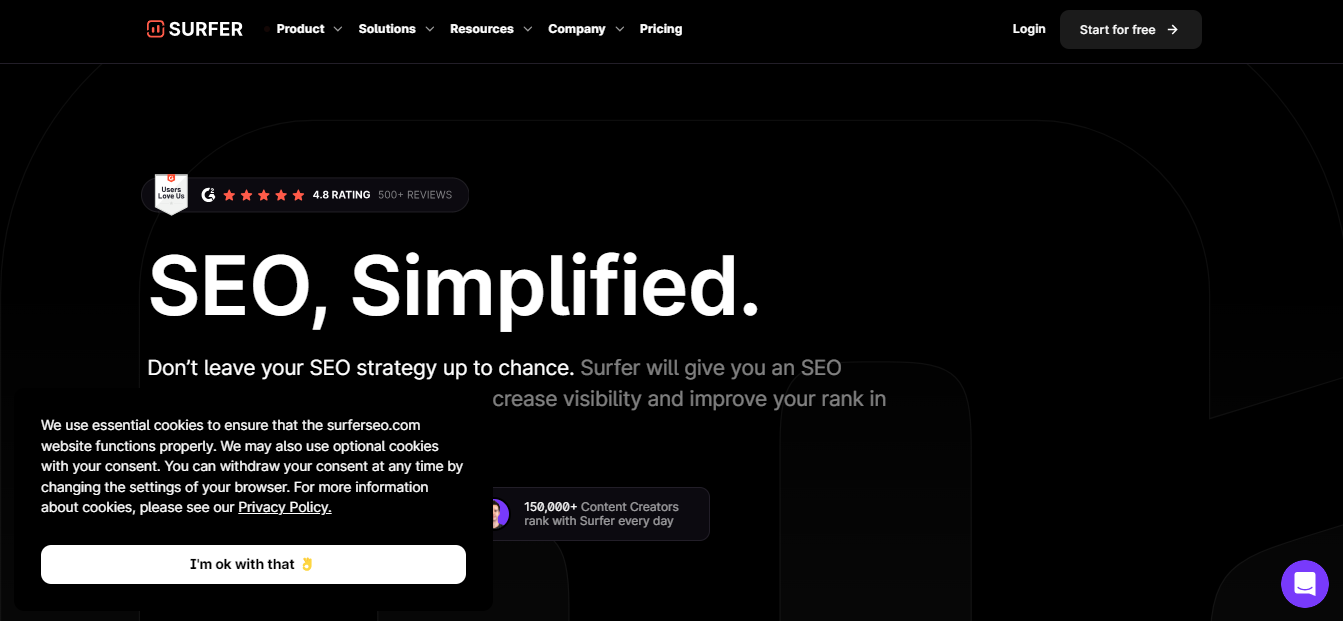 An important objective for any content strategy is to write text that ranks well in search engines. Surfer SEO is a tool for content optimization that makes this happen. As you write, Surfer evaluates and ranks your work based on factors like length, header usage, readability, and keyword density—all of which help material move up the search results.
An important objective for any content strategy is to write text that ranks well in search engines. Surfer SEO is a tool for content optimization that makes this happen. As you write, Surfer evaluates and ranks your work based on factors like length, header usage, readability, and keyword density—all of which help material move up the search results.
You must first select your domain, niche, and target market in order to use Surfer SEO. The algorithm will then highlight the top-ranking keywords, offer a suggested content outline layout, and even specify image density for your article to provide you with actionable insights. With Surfer SEO’s built-in text editor, you may work directly on it or use copy-paste for rapid examination. You will witness real-time improvements in the SEO as you make edits to your work.
There are connectors available for Jasper, WordPress, Google Docs, and other content marketing solutions. Surfer SEO claims to hit your organic growth metrics for Google search. FedEx, Shopify, Quantas, and Viacom are just a few of the happy customers.
8. Concept AI:
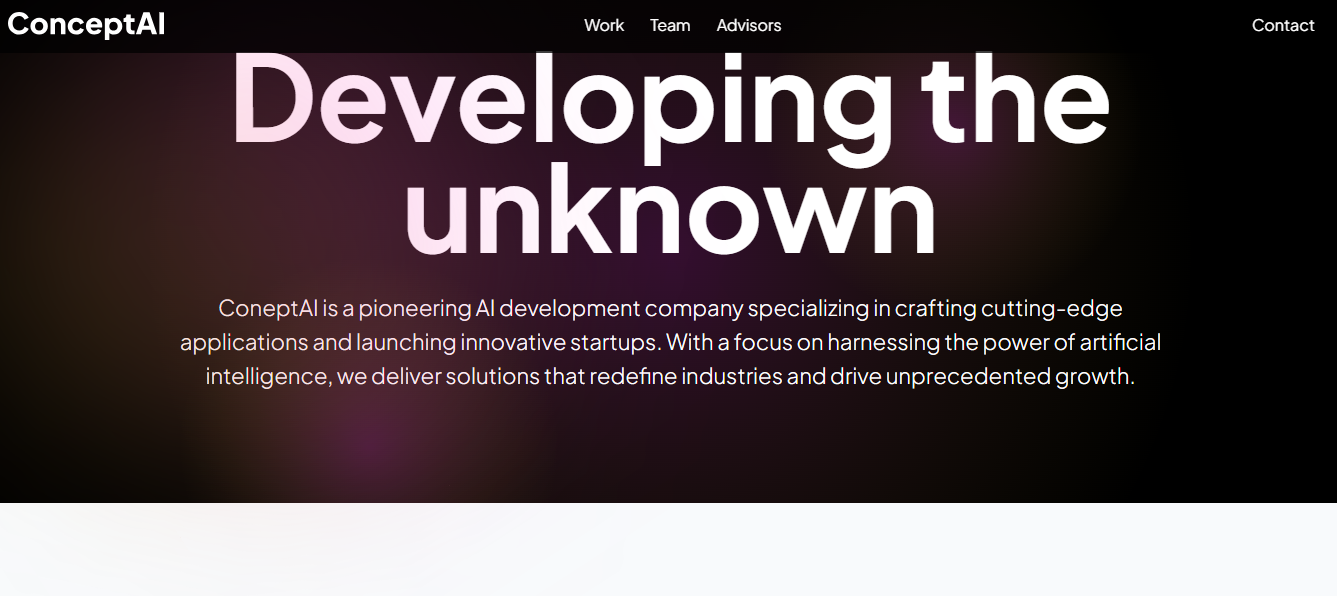 Notion just updated its well-liked productivity platform with the addition of Notion AI, a neat new feature. It makes tasks in Notion simple by utilizing AI. Basically, Notion AI allows you to ask questions in simple English about anything in your Notion workspace, including notes, projects, documents, and wikis, and it will retrieve the appropriate answer for you. The project management software functions akin to having a personal assistant built in.
Notion just updated its well-liked productivity platform with the addition of Notion AI, a neat new feature. It makes tasks in Notion simple by utilizing AI. Basically, Notion AI allows you to ask questions in simple English about anything in your Notion workspace, including notes, projects, documents, and wikis, and it will retrieve the appropriate answer for you. The project management software functions akin to having a personal assistant built in.
In addition, the AI may assist you with writing, idea generation, automatically populating tables, and more. So, utilizing Notion eliminates a lot of the tedious manual labor.
Depending on whether you pay annually or monthly, this option costs $8 or $10 per member per month. It may be added to free plans and is compatible with all paid Notion subscriptions.
Notion also prioritizes security and privacy. Data protection rules such as GDPR are complied with and your data is secured. Customers’ data is not used by the AI to train itself unless you directly consent to it. For a limited time, you can test Notion AI for free. The quantity of free responses you receive is based on your workspace membership. It is intended for the AI integration to grow and provide even more features in due course. It feels like a logical update because it integrates nicely with the text editor and capabilities already present in Notion.
In summary, Notion AI simplifies the process of staying organized and utilizing this widely used technology more effectively. Many tiresome activities are handled by the AI, freeing you up to concentrate on doing important jobs.
9. Content at Scale:
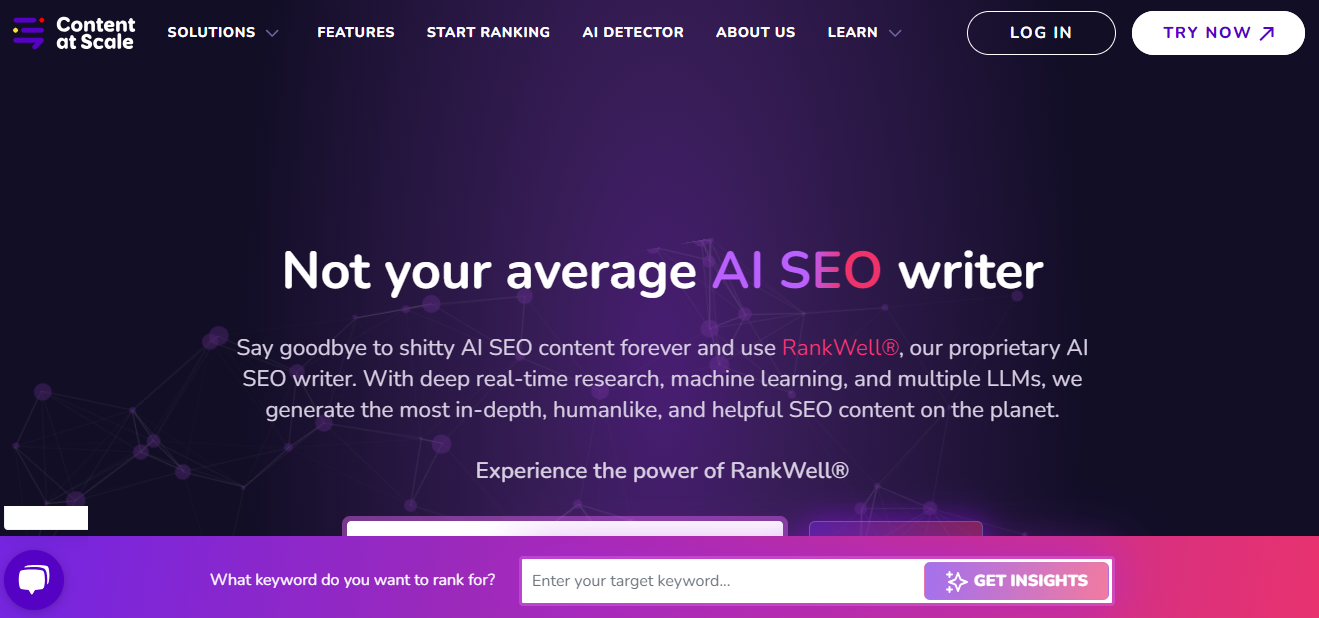 I’ve been playing around with Content at Scale over the past few months, and I must admit, I’m rather impressed. This is one of the few AI writing tools that passes AI detectors out of all the ones I’ve used. This tool produces articles that are usually at least 70% human-written when I run them through an AI detector, which is really astounding.
I’ve been playing around with Content at Scale over the past few months, and I must admit, I’m rather impressed. This is one of the few AI writing tools that passes AI detectors out of all the ones I’ve used. This tool produces articles that are usually at least 70% human-written when I run them through an AI detector, which is really astounding.
The UI can be a little glitchy, as the platform is still very new. However, in terms of AI content development, the stuff it produces is among the best that I’ve seen. Although it’s not as adaptable as Surfer when it comes to labeling H2 and H3 headings in your articles, the material that it produces is somewhat better than that of Surfer and even Jasper. If you want to create SEO blog content, I highly suggest experimenting with this tool. Of course, the final document should always be reviewed by a real person.
10. Originality AI:
 Originality AI is an AI plagiarism and content detection tool. These days, I check that practically all of the content has been produced by a human using this program. I won’t, of course, put real human writing through it. However, I usually run content generated by AI using a technology like Content at Scale to confirm which areas still require improvement.
Originality AI is an AI plagiarism and content detection tool. These days, I check that practically all of the content has been produced by a human using this program. I won’t, of course, put real human writing through it. However, I usually run content generated by AI using a technology like Content at Scale to confirm which areas still require improvement.
This is also a great tool to run your material through if you work with freelance writers and want to make sure they’re not using ChatGPT to produce a ton of text. Naturally use caution when utilizing these detectors. Rumors have it mistaking human writing for artificial intelligence. Still, among all of them, I felt this was one of the stronger AI content detectors.
11. Writer:
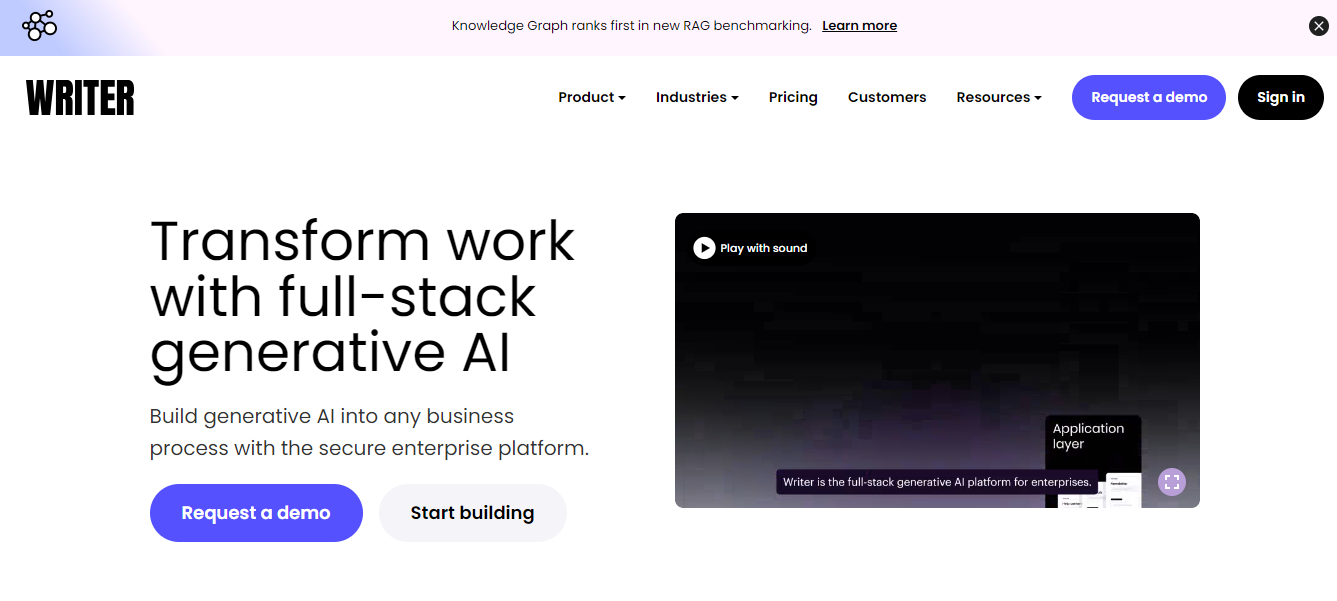 First of all, the writer has a high-value URL, which suggests that they have big plans. They present their platform to marketing teams as a writer’s assistant. Writer is a collaborative productivity application that amplifies some of the functionality found in a conventional text editor such as Word.
First of all, the writer has a high-value URL, which suggests that they have big plans. They present their platform to marketing teams as a writer’s assistant. Writer is a collaborative productivity application that amplifies some of the functionality found in a conventional text editor such as Word.
Features include grammar and clarity checks, autocorrect, autocomplete, and frequently used snippets that may be pasted in. A database of acceptable vocabulary is among the intelligence tools available to uphold house style, which is crucial for technology, legal, and financial businesses. Their AI is kind; instead of rewriting entire paragraphs of text, it works in the background and makes recommendations. This AI writer might give you all the assurance you need that your writing stays precise and professional for all purposes whether you have a hybrid or virtual staff working with little to no in-person supervision.
12. Undetectable AI:
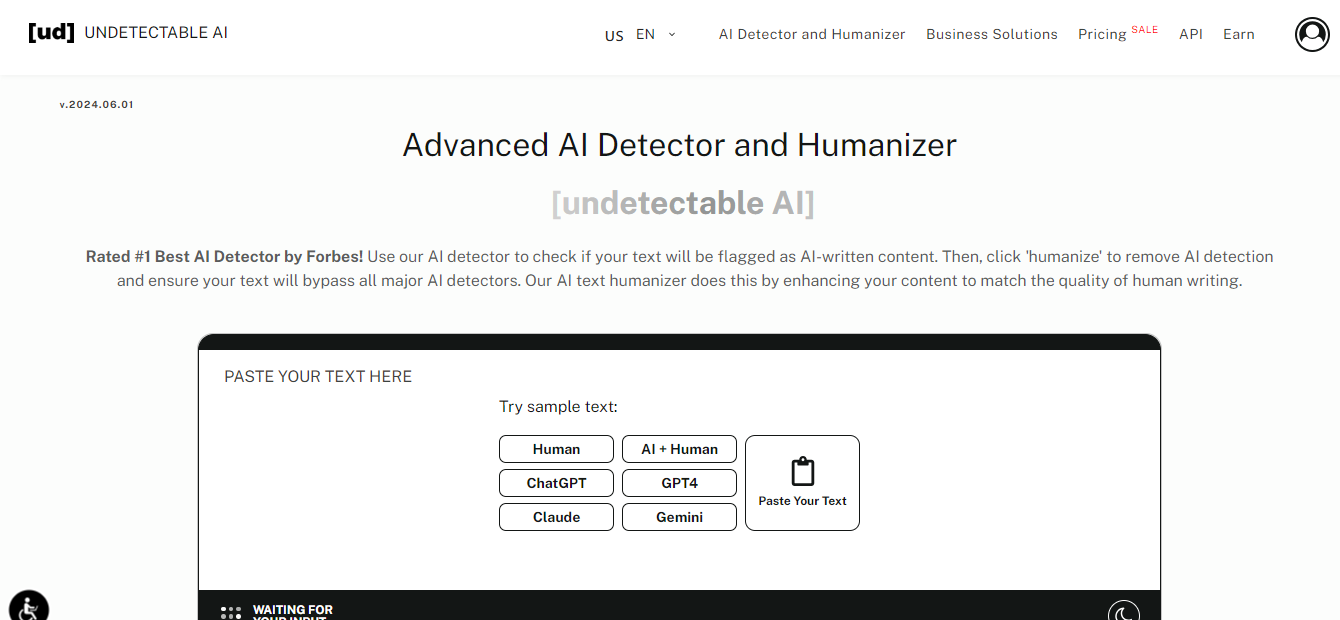 Similar to Originality AI, Undetectable AI is another type of AI content detector. This one is unique since it has the ability to rewrite ChatGPT’s AI-generated material to sound more human. To test this, I wrote a paragraph in ChatGPT, rewrote it using Undetectable AI, and then double-checked it using Originality AI. I was surprised to see that it performs fairly well.
Similar to Originality AI, Undetectable AI is another type of AI content detector. This one is unique since it has the ability to rewrite ChatGPT’s AI-generated material to sound more human. To test this, I wrote a paragraph in ChatGPT, rewrote it using Undetectable AI, and then double-checked it using Originality AI. I was surprised to see that it performs fairly well.
Once more, you should use caution while using these AI detectors and rewriters. This program occasionally rewrites sentences that don’t quite make sense. Alternatively, it will intentionally make grammatical errors. As a result, you should still review everything it produces to ensure there are no mistakes.
13. Fullstory:
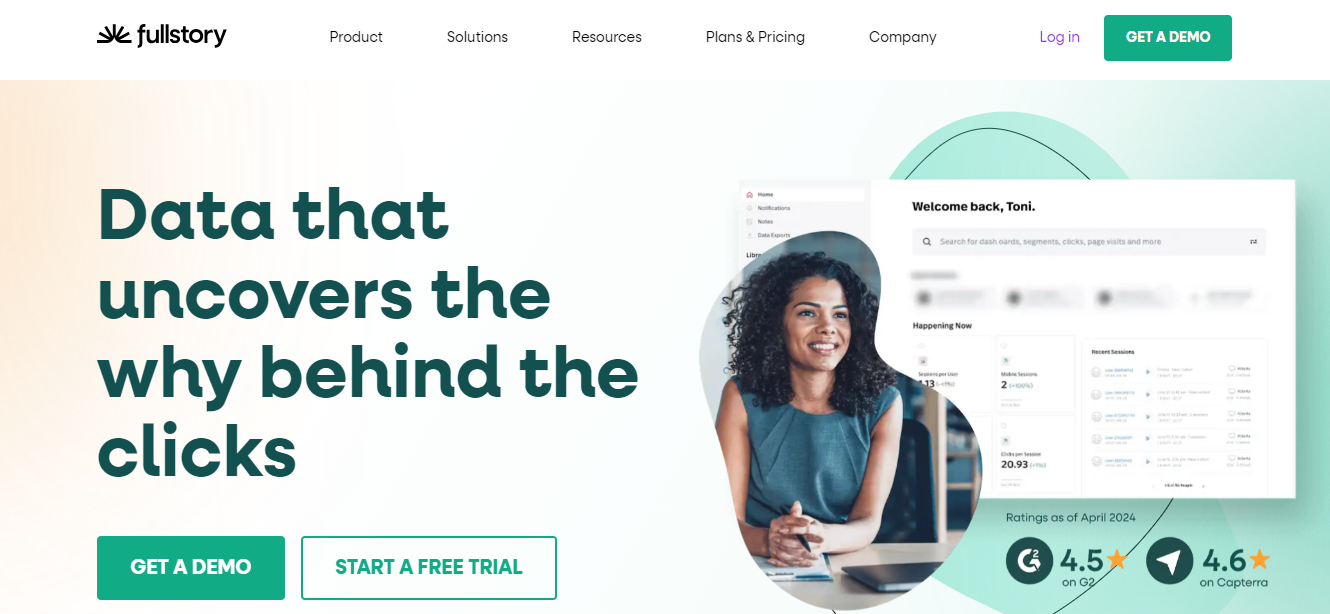
Fullstory refers to a site visitor’s entire online experience—from their initial visit to conversion (or discard). They raise an important point: you can learn a great deal from the unexpected, unanticipated actions that customers take.
In order to generate its “story,” Fullstory uses artificial intelligence (AI) to monitor each visitor’s mouse movement, click, and page visit. Then, to gain understanding, this can be contrasted with the narratives of thousands of other visitors. Fullstory finds chances and mistakes far faster than any human observer could because of the processing power and scalability of AI automation.
Fullstory asserts that consumers will save money, draw in more visitors, and greatly enhance the user experience on their website. Currently, GAP, Zipcar, Icelandair, and Forbes are among their clientele.
14. Zapier:
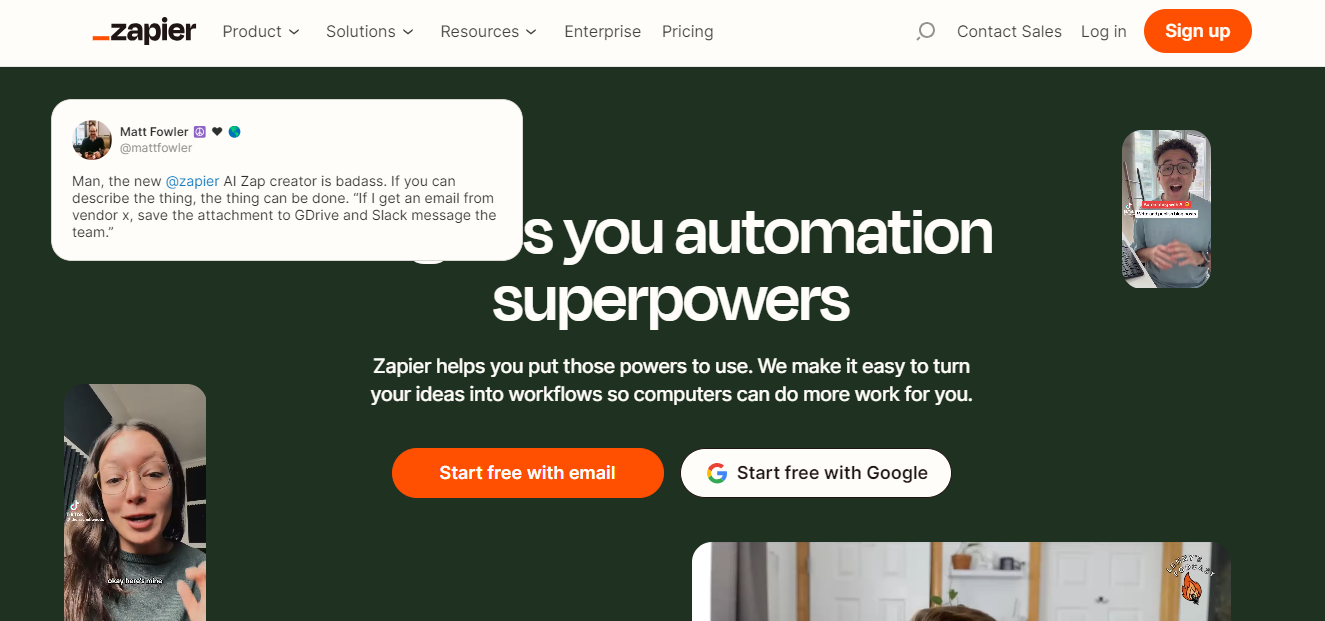 Zapier can be used to establish connections and marketing automation between thousands of different systems, which can decrease labor-intensive tasks, boost productivity, save time, and save costs. You build customized workflows to link actions in one system to automated processes in one or more other systems. Each time, the relevant data is extracted from the right source.
Zapier can be used to establish connections and marketing automation between thousands of different systems, which can decrease labor-intensive tasks, boost productivity, save time, and save costs. You build customized workflows to link actions in one system to automated processes in one or more other systems. Each time, the relevant data is extracted from the right source.
These automations can be constructed without any programming, and there are templates available to speed up the process. Zapier had more than 3,000 integrations as of the time of writing. These automations are referred to as “zaps.” Furthermore, branching workflows can be created using the logical standards that you define. AI is working in the background, reading signals to trigger activities at a pace and efficiency that a human team could never equal. Consumers rave about the time they save with these zaps. For those who are not familiar with coding, Zapier University provides excellent support in addition to training, a blog, webinars, and an online community.
15. Headlime:
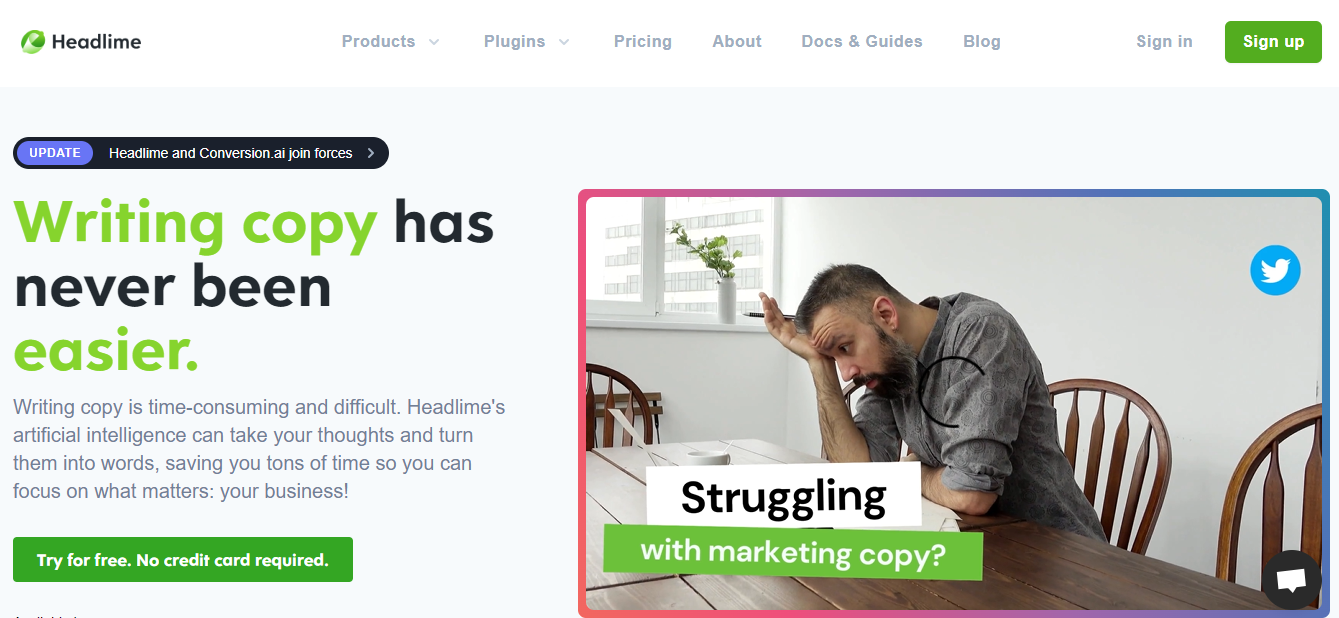 The language on the Headlime Landing Page is crucial since it acts as a showcase for the internet. Headlime is a platform for AI-driven content creation designed to improve landing page design. Headlime can predict and complete sentences you type using machine learning and OpenAI’s GPT-3’s deep learning capabilities, potentially saving you a significant amount of time. It can produce content in multiple languages and tones, maximize word count, and offer effective subject lines.
The language on the Headlime Landing Page is crucial since it acts as a showcase for the internet. Headlime is a platform for AI-driven content creation designed to improve landing page design. Headlime can predict and complete sentences you type using machine learning and OpenAI’s GPT-3’s deep learning capabilities, potentially saving you a significant amount of time. It can produce content in multiple languages and tones, maximize word count, and offer effective subject lines.
Similar to Jasper, it can create blog content, but it also comes with a simple landing page builder that eliminates the need for constant copying and pasting. Most importantly, it never loses focus on the objective, which is to increase time spent on the website and conversions. With over 1,700 copy templates in 11 languages at your disposal, you may easily create a landing page that is accessible worldwide.
16. Userbot.ai:
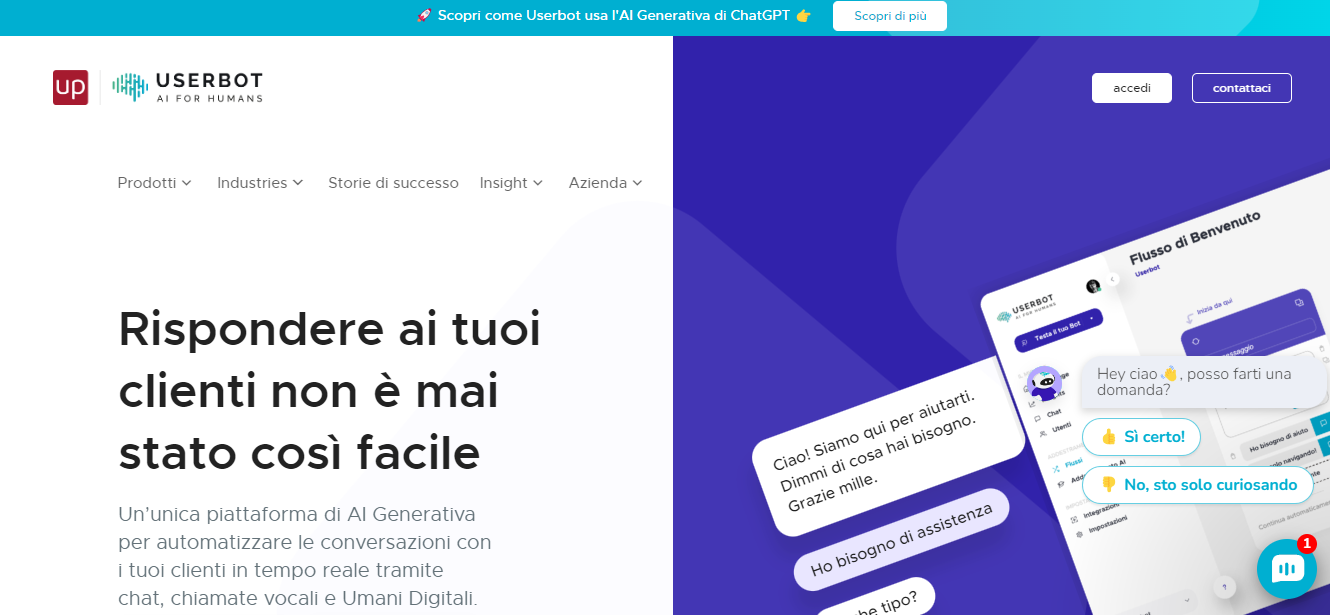 Userbot is significantly more intelligent than what it first appears to be—just another chatbot. When a userbot is unable to comprehend a customer’s request, it passes control of the conversation to a human operator, but it continues to monitor and learn from the discussion. After that, the userbot incorporates the new user inquiry into its repertoire and uses what it has discovered to improve.
Userbot is significantly more intelligent than what it first appears to be—just another chatbot. When a userbot is unable to comprehend a customer’s request, it passes control of the conversation to a human operator, but it continues to monitor and learn from the discussion. After that, the userbot incorporates the new user inquiry into its repertoire and uses what it has discovered to improve.
As a result, Userbot should become more intuitive and effective over time, however initially you may still need to interact with human operators quite a bit. When I asked it, “Who are your top clients?” For the record, they are Aboca, SSG, and Vivactis Group. The system interacts with various well-known CRM solutions and provides useful customer data that you can use to monitor the performance of your sales and customer support employees.
17. Browse AI:
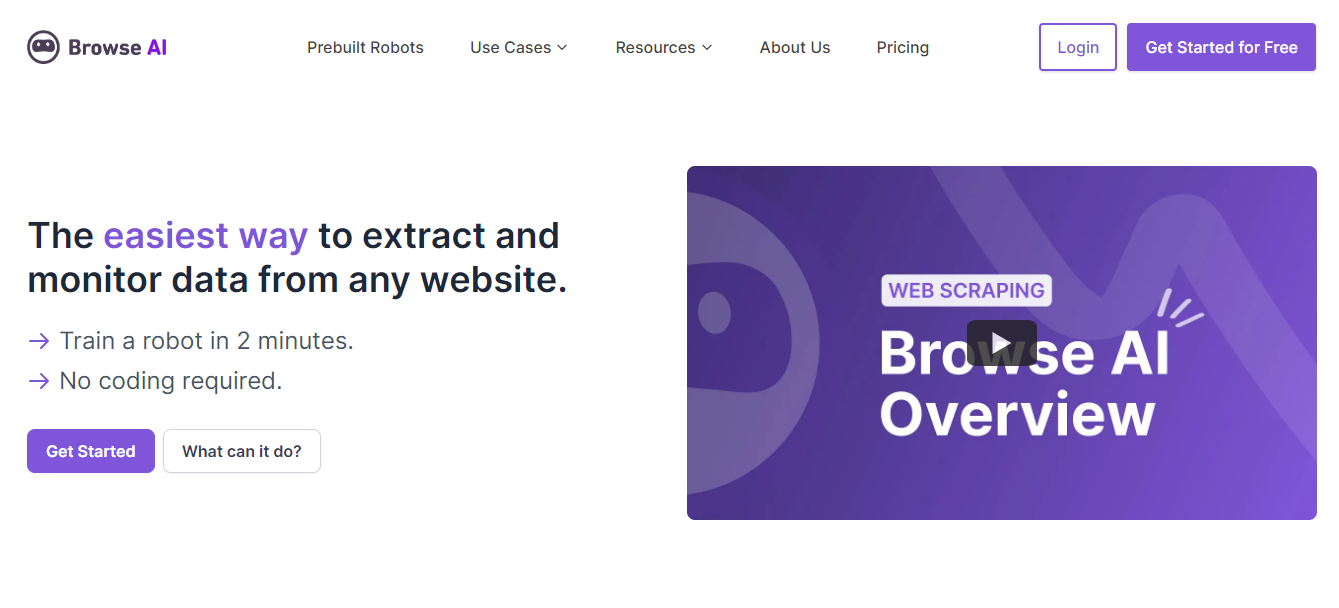 Browse AI Competitive intelligence (CI) is one of the most powerful tools in a digital marketer’s toolbox. It lets you assess competitors’ brands and pinpoint recent changes in product launches, price strategies, reviews, and trends. Continuous integration (CI) at scale requires data scraping, or the use of algorithms (sometimes referred to as “spiders” or “bots”) to search competitor websites and extract important information.
Browse AI Competitive intelligence (CI) is one of the most powerful tools in a digital marketer’s toolbox. It lets you assess competitors’ brands and pinpoint recent changes in product launches, price strategies, reviews, and trends. Continuous integration (CI) at scale requires data scraping, or the use of algorithms (sometimes referred to as “spiders” or “bots”) to search competitor websites and extract important information.
You can quickly fill a spreadsheet with all the information you need by teaching a bot to find data for you with Browse AI. You could set it up to look for one- or two-star reviews of similar products from competitors to find areas for future product improvements, or to check what similar products are currently selling for on online retailers. According to Browse’s developers, their artificial intelligence can mimic human behavior in order to get past Captcha and other anti-bot security measures. The program is used by over 2500 companies, such as Adobe, Amazon, Salesforce, and HubSpot.
18. Algolia:
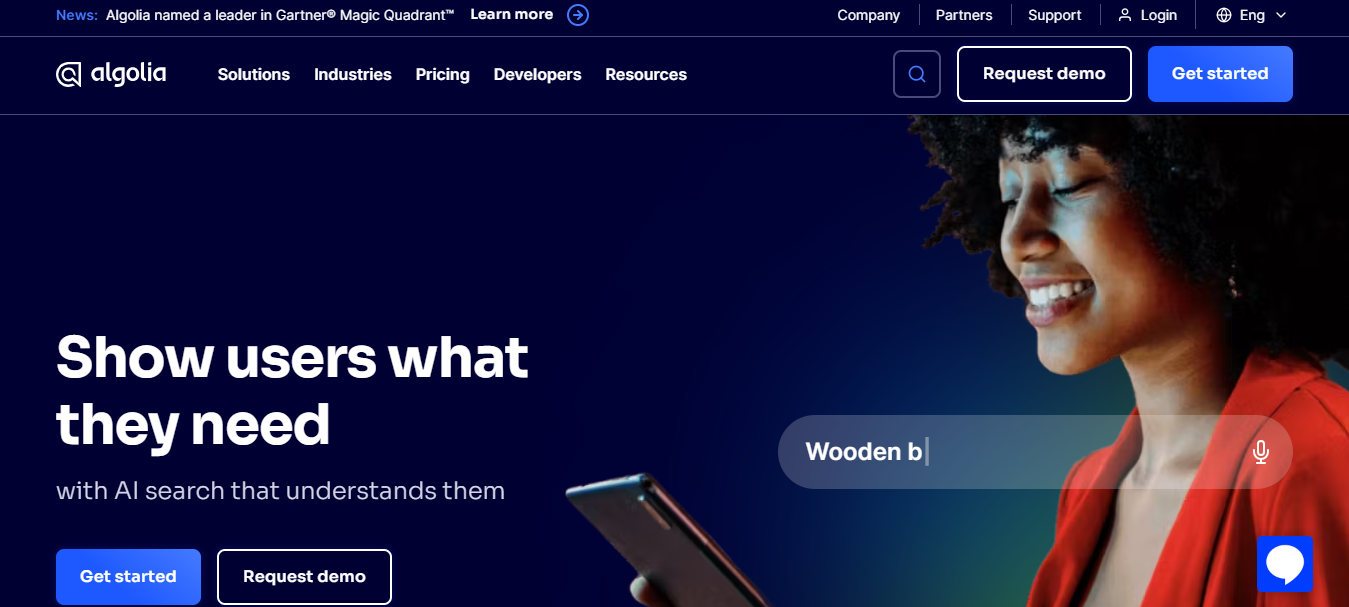 This is made possible by Algolia, which is why e-commerce companies and entertainment companies with large inventories adore it so much. If customers don’t have to spend as much time aimlessly browsing your catalog, they are more likely to make a purchase from you. Create your own search filter to help customers locate what they’re looking for fast and effortlessly. Algolia is already in use by numerous other sales websites, such as those of Staples, Gymshark, NBCUniversal, Decathlon, and Lacoste.
This is made possible by Algolia, which is why e-commerce companies and entertainment companies with large inventories adore it so much. If customers don’t have to spend as much time aimlessly browsing your catalog, they are more likely to make a purchase from you. Create your own search filter to help customers locate what they’re looking for fast and effortlessly. Algolia is already in use by numerous other sales websites, such as those of Staples, Gymshark, NBCUniversal, Decathlon, and Lacoste.
19. Picture Room:
 You may use this fantastic (and free) specialized program to remove the background from any photo and highlight the human subject on a transparent background for usage in other images. I tried it with some of my own photos, and it worked quite well. This design tool uses machine learning and artificial intelligence (AI) to separate a portrait’s subject from its surroundings. Defining the contour of an image with PhotoRoom takes seconds, compared to the 10 minutes a designer could have needed in the past. You can add a background of any color you choose.
You may use this fantastic (and free) specialized program to remove the background from any photo and highlight the human subject on a transparent background for usage in other images. I tried it with some of my own photos, and it worked quite well. This design tool uses machine learning and artificial intelligence (AI) to separate a portrait’s subject from its surroundings. Defining the contour of an image with PhotoRoom takes seconds, compared to the 10 minutes a designer could have needed in the past. You can add a background of any color you choose.
It’s a huge help to anyone who needs to make an avatar for use on a “meet the team” website or other locations. Both a paid batch version and a mobile app are available.
20. Respond.io:
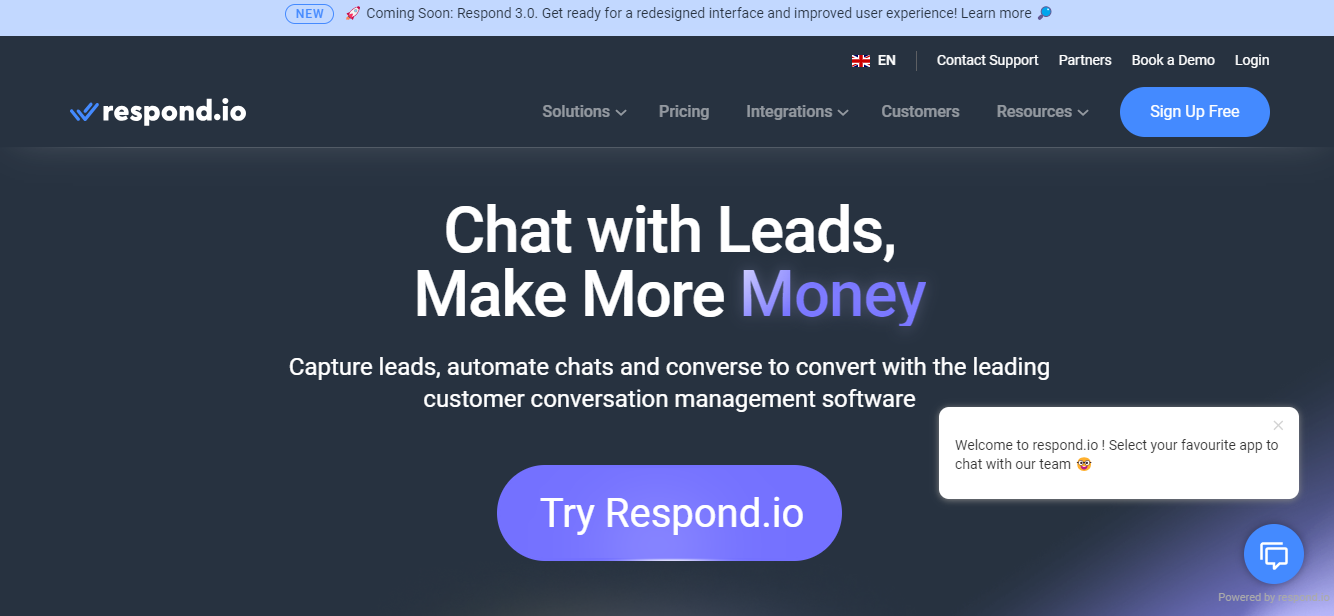 Making frequent email replies is another labor-intensive and repetitive marketing task that can quickly get boring. Reply.io’s AI Sales Email Assistant aims to do away with the majority of that tiresome labor. It has a lot of uses, though, even if it bills itself as a “sales engagement platform.” Even though the conversion rate of email marketing campaigns is a woeful 1.22%, scaling them can result in a huge amount of prospective leads. To get the most out of this fully automated approach, you need to use an AI-powered email marketing platform such as Reply.io.
Making frequent email replies is another labor-intensive and repetitive marketing task that can quickly get boring. Reply.io’s AI Sales Email Assistant aims to do away with the majority of that tiresome labor. It has a lot of uses, though, even if it bills itself as a “sales engagement platform.” Even though the conversion rate of email marketing campaigns is a woeful 1.22%, scaling them can result in a huge amount of prospective leads. To get the most out of this fully automated approach, you need to use an AI-powered email marketing platform such as Reply.io.
Use a variety of channels to create drip campaigns of cold emails, and Reply will handle the rest by employing artificial intelligence (AI) to score answers and help identify prospective prospects. You have access to a wide range of CRM integrations and predictive analytics tools to track the progress of your campaigns.
21. Brand24:
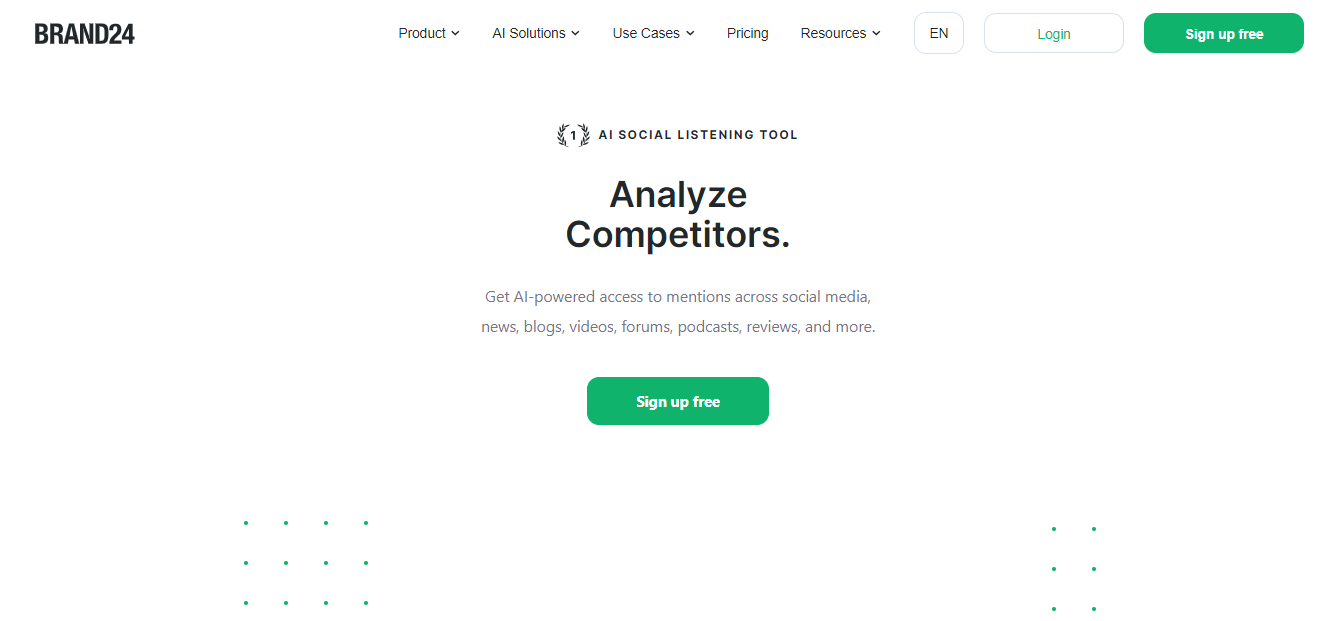 If you want to see how your brand is mentioned online, where should you start? Brand24 looks for mentions on news websites, blogs, forums, videos, social media, and other platforms. Sentiment analysis is then employed to ascertain the topics of conversation as well as the underlying emotions of users and reviewers. You can respond quickly to complaints and difficulties from customers, which improves client retention and could help you find flaws in your products and services before they become major issues. Brand24 is considerably more effective than a Google keyword search at removing irrelevant content and emphasizing both negative and positive evaluations.
If you want to see how your brand is mentioned online, where should you start? Brand24 looks for mentions on news websites, blogs, forums, videos, social media, and other platforms. Sentiment analysis is then employed to ascertain the topics of conversation as well as the underlying emotions of users and reviewers. You can respond quickly to complaints and difficulties from customers, which improves client retention and could help you find flaws in your products and services before they become major issues. Brand24 is considerably more effective than a Google keyword search at removing irrelevant content and emphasizing both negative and positive evaluations.
There’s a great feature for spotting hashtag trends in addition to top-notch customer support, which includes blogs and masterclasses to polish your marketing approach and customer service skills. Among the clients are Uber, Stanford University, and Intel.
22. Power AI:
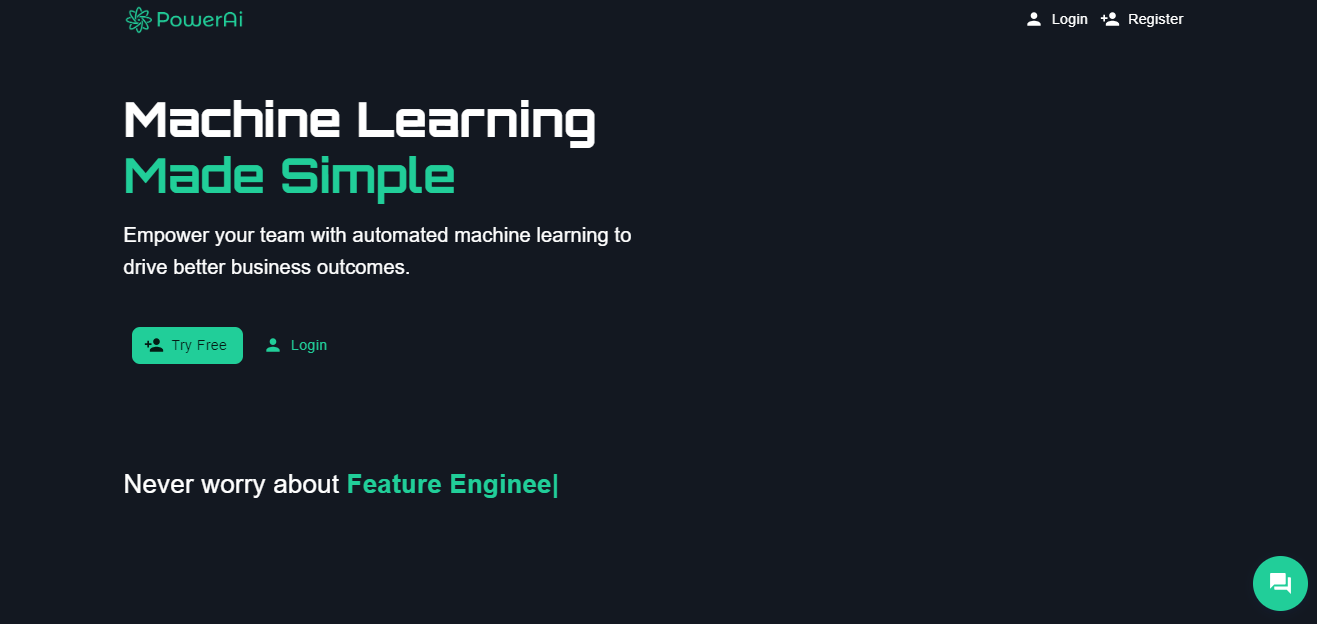 Social media influencer marketing has become very popular in the last few years, and it doesn’t seem to be going away. Social media influencers are a useful tool for brands, especially those aiming to reach younger or more niche audiences, to use for endorsements, product reviews, hauls, sponsorship, and traditional advertising. Known for being the “most complete influencer marketing platform available,” Samsung, Kellogg’s, and WPP are just a few of the well-known companies that use Influencing. It helps marketers find influencers, connect with them, collaborate on initiatives, and track their progress. All of the major social media platforms are covered. Because it can operate at scale across multiple brands and has an abundance of statistics, this is a great agency solution.
Social media influencer marketing has become very popular in the last few years, and it doesn’t seem to be going away. Social media influencers are a useful tool for brands, especially those aiming to reach younger or more niche audiences, to use for endorsements, product reviews, hauls, sponsorship, and traditional advertising. Known for being the “most complete influencer marketing platform available,” Samsung, Kellogg’s, and WPP are just a few of the well-known companies that use Influencing. It helps marketers find influencers, connect with them, collaborate on initiatives, and track their progress. All of the major social media platforms are covered. Because it can operate at scale across multiple brands and has an abundance of statistics, this is a great agency solution.
23. Lately AI:
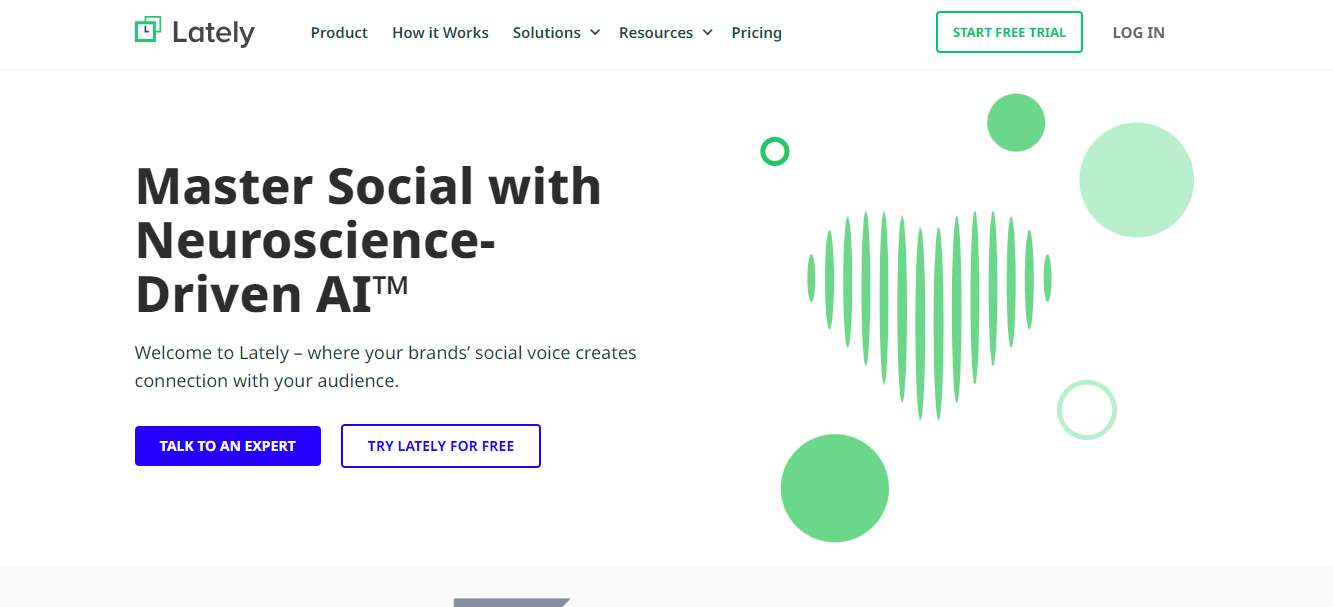 In relation to social media, are you familiar with the idea of content repurposing? It involves turning already published content—like blog articles, ebooks, or videos—into entirely original social media posts. An AI program called Lately.ai was created specifically for reusing. Give this tool any published material, and it will take care of the rest. You will receive social media posts that are optimized for your platform, which you may schedule and review.
In relation to social media, are you familiar with the idea of content repurposing? It involves turning already published content—like blog articles, ebooks, or videos—into entirely original social media posts. An AI program called Lately.ai was created specifically for reusing. Give this tool any published material, and it will take care of the rest. You will receive social media posts that are optimized for your platform, which you may schedule and review.
Conclusion
These are just a few instances of how AI can revolutionize marketing firms. Every day, as technology develops further, new opportunities arise. But immense power also entails great responsibility. Although incorporating AI can greatly increase productivity, efficiency, and creativity, we still need to be aware of its limitations. Don’t forget to put a personal touch on whatever you give.

